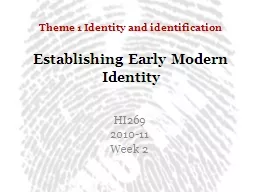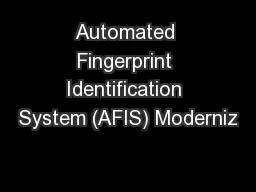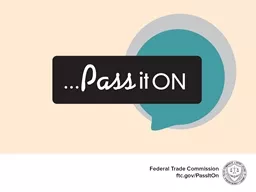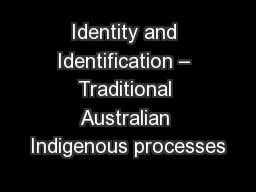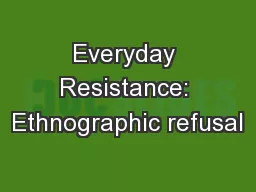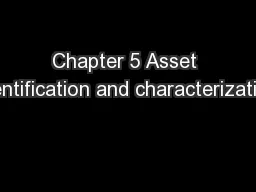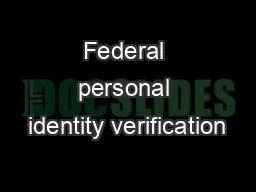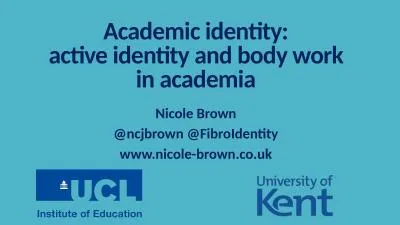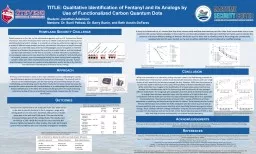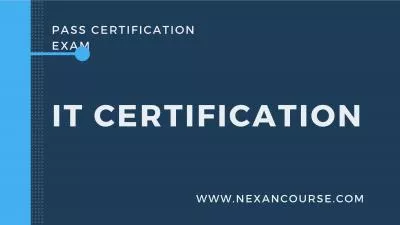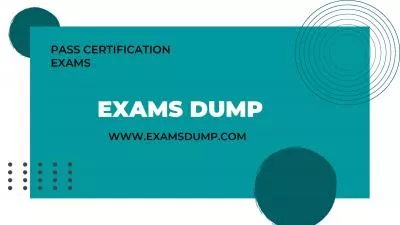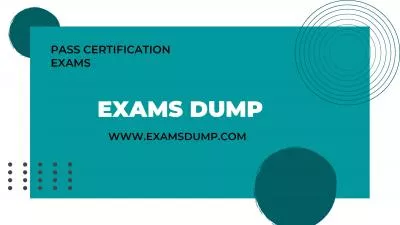PPT-Theme 1 Identity and identification
Author : tatiana-dople | Published Date : 2016-04-01
Establishing Early Modern Identity HI269 201011 Week 2 Who do you think you are Time space and the basis of identity How do you identify yourself Documents Biometrics
Presentation Embed Code
Download Presentation
Download Presentation The PPT/PDF document "Theme 1 Identity and identification" is the property of its rightful owner. Permission is granted to download and print the materials on this website for personal, non-commercial use only, and to display it on your personal computer provided you do not modify the materials and that you retain all copyright notices contained in the materials. By downloading content from our website, you accept the terms of this agreement.
Theme 1 Identity and identification: Transcript
Download Rules Of Document
"Theme 1 Identity and identification"The content belongs to its owner. You may download and print it for personal use, without modification, and keep all copyright notices. By downloading, you agree to these terms.
Related Documents

